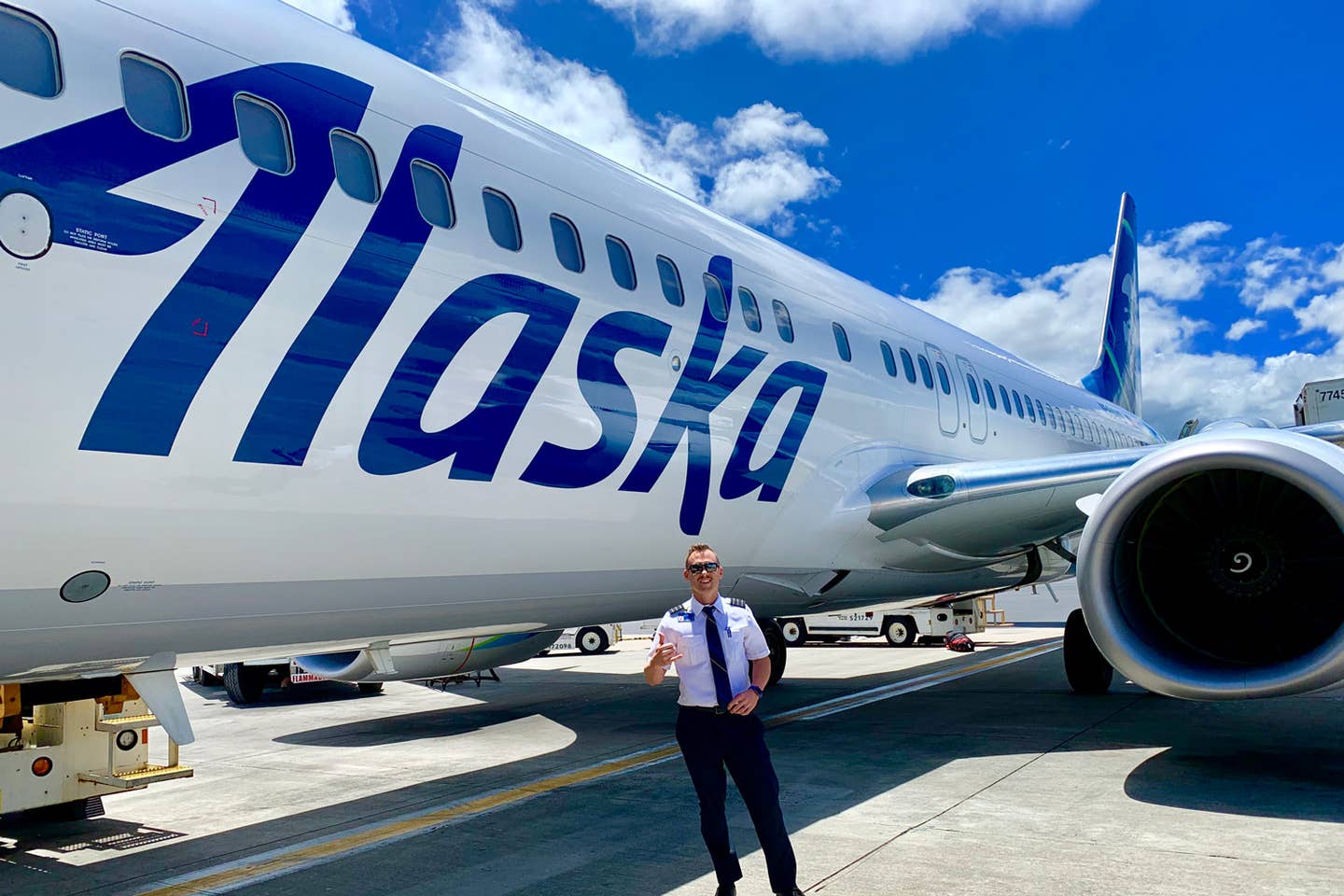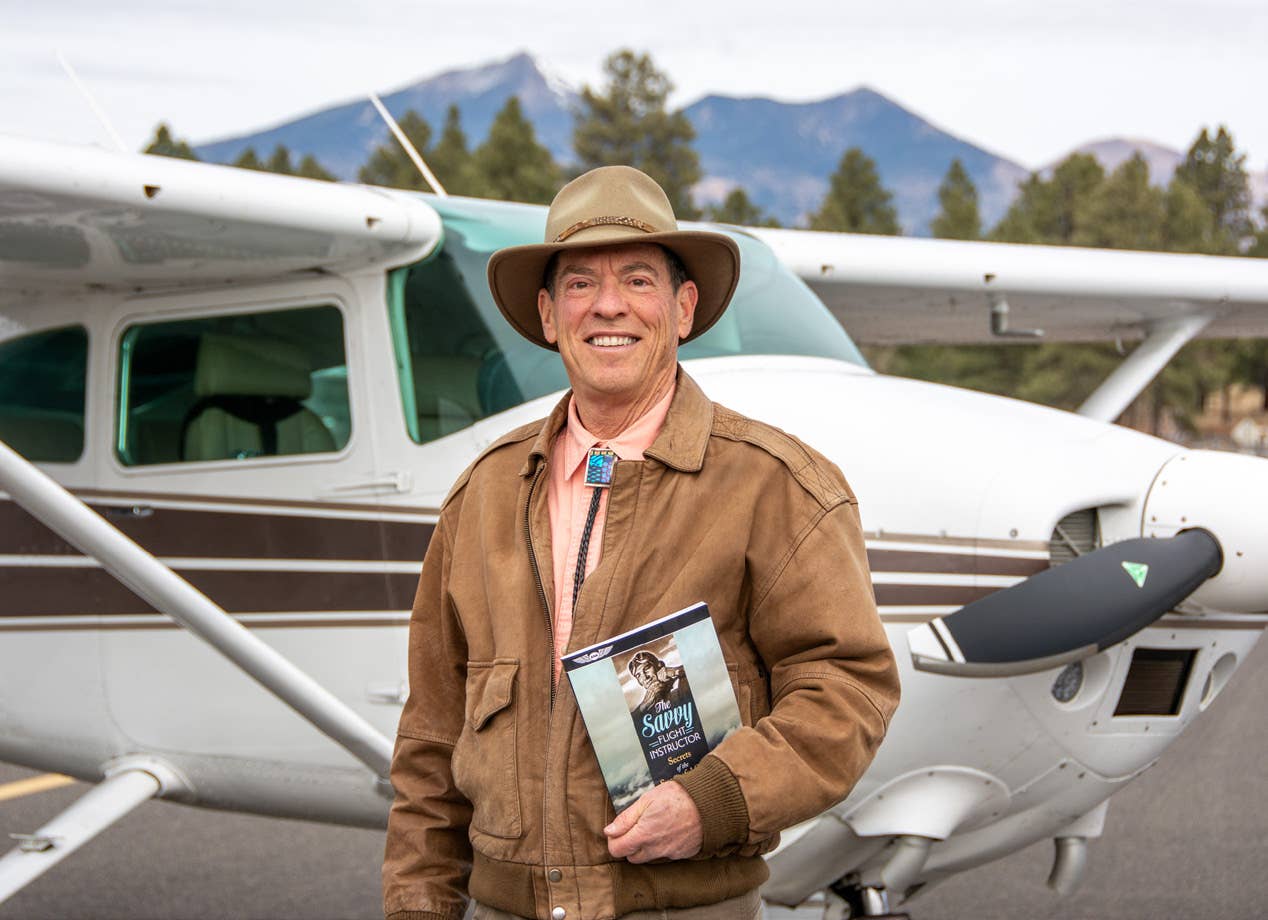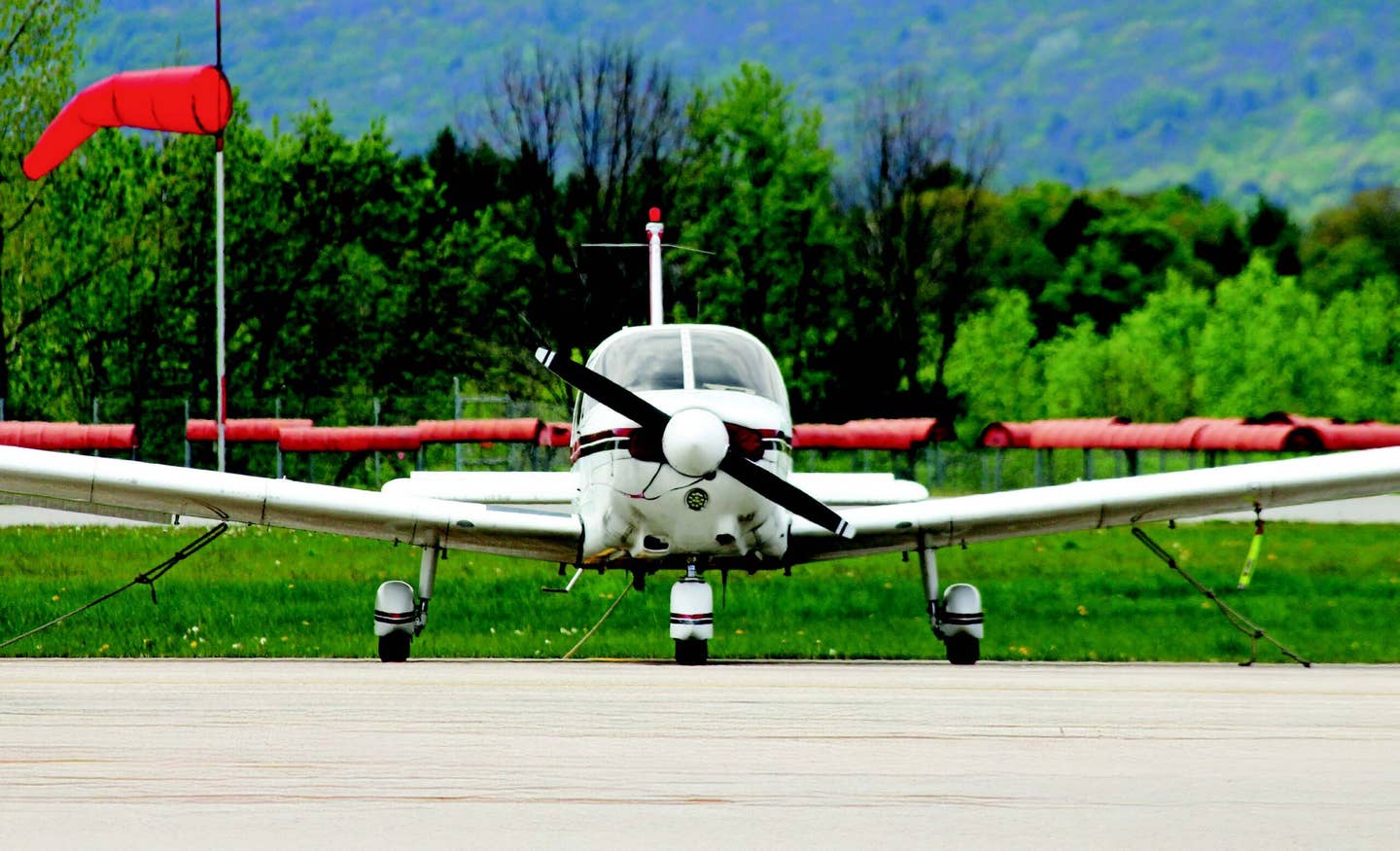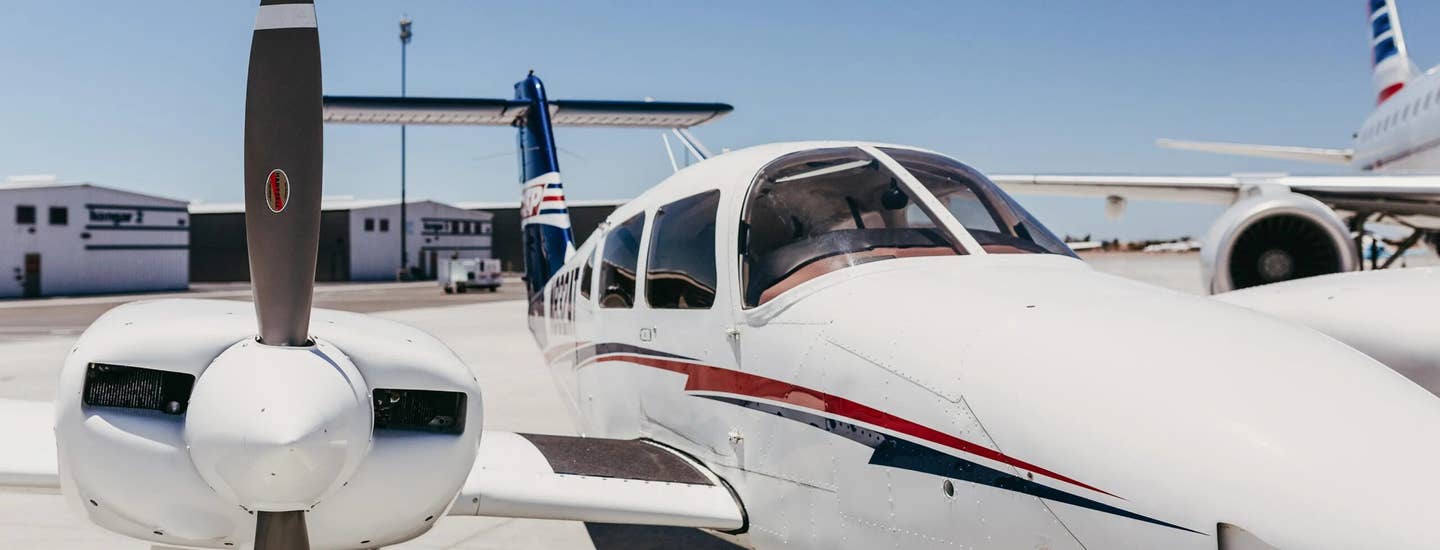
He earned his way into the right seat of one of Alaska Airlines’ Boeing 737s. Courtesy Richard Ethington
By the time most pilots have begun applying to the major airlines, they can usually recite the carrier’s requirements, whether it’s total flight or PIC time, education, experience or myriad other demands. Sometimes though, a pilot manages to win a seat in an airline class despite not meeting each and every requirement.
Consider formal education. A decade ago it was unheard of for a major U.S. airline to hire a pilot who lacked a four-year college degree. Most carriers in fact required one. But the recent dearth of applicants within the industry has meant the majors are beginning to consider people coming through the pipeline without degrees. In most cases though, the final hiring decision isn't just black and white; a solid pilot candidate, even one without a degree, usually possessed other experience that sealed the deal.
Richard Ethington is a prime example of that kind of candidate. He earned his way into the right seat of one of Alaska Airlines’ Boeing 737s despite only two semesters of college under his belt. He thinks the final decision was made, in part, because Alaska considered his experience flying a Bombardier CRJ into and out of some of the most challenging mountainous airports in the United States when he flew for SkyWest Airlines.
Ethington also said he recognized early on the career value of the additional training SkyWest offered with its designated mountainous airport program. Alaska Airlines is of course famous for its initial research into RNP approaches used to get into some of the smaller southeastern Alaskan cities such as Juneau, Ketchikan and Petersburg using RNP navigation—and now that’s in Ethington’s skill set.
He remembers simply wondering what the aviation industry was all about, not that long ago. “In October 2011, I really wanted to get out of sales for a long-term profession that offered an opportunity for growth,” he said. “I wanted to fly from the time I was a little kid but always thought I would be more of a recreational pilot.” He confessed that he thought only military-trained aviators could advance to the airlines.
Luckily Ethington’s own research proved to him that he could finance his own way through flight school, and he quickly signed up with ATP Flight School in Mesa, Arizona. Within five months, he made the professional leap from zero flight time to earning a commercial certificate and multi-engine, instrument and CFI ratings. He began instructing for ATP in Las Vegas before heading back to Arizona as an ATP CFI.
By June of 2014, he was hired as a first officer at SkyWest and awarded its Minneapolis base and the Bombardier CRJ. He eventually transferred to the airline’s Los Angeles base for 2½ years before returning to Phoenix. Always ready for the next opportunity, Ethington transferred to Chicago in February 2017 when his first captain-upgrade opportunity appeared. He eventually bid SkyWest’s designated mountainous airport base in LA, a move that drastically shortened his commute home to Phoenix.
Right from the beginning, Ethington recalled, he always knew his “goal was to apply to one of the legacy carriers,” although precisely which one wasn’t that clear, at least not at first. “One of the benefits of flying for SkyWest was the chance to see the operation of American, Delta, United and Alaska. That’s actually how I was led to Alaska. A good friend went to work for Alaska Airlines, and I found myself drawn for a couple of reasons.”
Ethington said Alaska’s route structure and stability were particularly appealing, as was the airline’s West Coast-base opportunities. He applied to Alaska in late 2017 and because of another friend, managed to meet the LA base chief pilot in February 2018. Because Alaska bought Virgin America in 2016, hiring had slowed in 2018 to better allow Alaska to focus on the integration of Virgin.
So Ethington also applied to other airlines: JetBlue, American and Southwest. “I didn’t want to put all my eggs in one basket,” he said. “I thought JetBlue would be a better choice with a better financial future, and I also thought that if I could be based at home [in Arizona] and drive to work, it would certainly make my life a lot easier too.”
He thought one obstacle to a couple of the majors was that they seemed to like people with four-year degrees. Ethington’s two semesters of college were focused on what he thought at the time was his destiny: medicine. He said his lack of a degree is why he never applied to Delta. “I decided to focus on companies where I had connections.”
His first actual offer came from JetBlue in June 2018, and Ethington accepted. Just as he completed JetBlue’s training program, Alaska Airlines called with an interview opportunity in January. “I’d always wanted to be West Coast-based, living in Phoenix. I didn’t want to have to commute across the country if I didn’t have to, so I decided to take the interview.”
Alaska offered him a class date in February. Now he had to tell the people at JetBlue that he wanted to accept the offer from Alaska. Ethington said the chief pilot in New York was really understanding when he went in to speak with him: “He knew I lived on the West Coast and had three little kids and a wife.”
“Alaska can offer you a better quality of life,” the boss told him. “If I were you, I would probably do the same thing.”
A few months later, Ethington began flying the line as a 737 first officer for Alaska Airlines from a Seattle base. “I expect to be able to hold a Los Angeles base by this November,” he said. With between 24 and 26 flights each day between LAX and PHX, he expects his commute to work should be pretty easy. Just like his days at SkyWest, Ethington qualified to fly into the most challenging airports in the Alaska route system. He mentioned the RNAV RNP Runway 26 approach leading to Juneau to highlight some of those challenges: “We fly down the Gastineau Channel between the hills then make a hard left and look for the airport at 400 feet.”
Ethington learned quite a bit about the hiring process along the way to the right seat at Alaska—information he wanted to share with people starting out on this career path.
“I don’t think people understand how important networking can be to a career, so I always try to meet people, like the ones who sat in our jumpseats. I’d talk and get their names and phone numbers and keep in contact,” he said. “I’d meet people in line at the airport and talk about what they’re doing, where they’re going. I feel networking has been really big for me. I have had a number of people put a good word in for me with chief pilots. I felt like they’re always plugging, positively, and kept my name in front of recruiters. That really helped my progress.”
Another important insight Ethington shared is that, “sometimes I see regional airline pilots get too comfortable and skip the first available captain upgrade because they have good schedules, good money, and they don’t want to go back to being the junior guy. There’s nothing wrong with that, but if your goal is to move on to a major airline, you should take the first available upgrade to build your PIC time and your experience.”
First officers’ seniority determines when they can upgrade to captain. The sooner they’re hired by airlines, the quicker they gain seniority and upgrade to the left seat, accelerating the journey to the major airlines.
Ethington also recommends building one’s know-how beyond the basics: “I believe in extracurricular training if you can. That designated mountainous airport program at SkyWest gave me a whole new level of skill.” He mentioned that flying into places such as Aspen and Eagle came up quite a bit during his interviews.
Now that he’s been flying for Alaska for six months, Ethington was asked if any of his advancement strategies had changed, such as taking the first available captain-upgrade opportunity even if it meant being based in a distant city.
“That’s a good question. It kind of depends. Because I have young kids, obviously, money is not everything,” he said. “Now that I’m at Alaska Airlines, I think I will wait and see. I guess I’d make my decision on the fly.”
No pun intended, he added.

Sign-up for newsletters & special offers!
Get the latest FLYING stories & special offers delivered directly to your inbox






